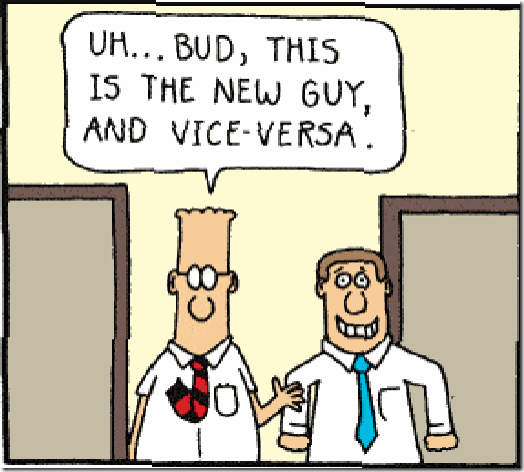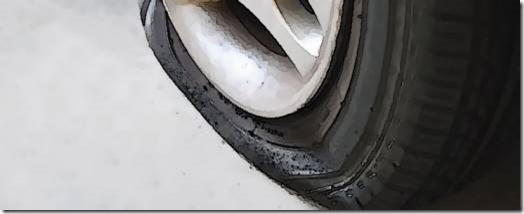I get quite a few hits from people asking about the Show Me/Tell Me questions that are asked at the start of the driving test. It didn’t occur to me until now that I’ve never written about them before!
When you turn up for your test, the examiner will come out of the office, usually precisely on time, and call your name. He’ll ask to see your driver’s licence (that’s just the photo card – the paper part is now obsolete and you should destroy it). He will ask if you’re still living at the address on the licence (if you aren’t, and/or you want your full licence sending to a different address you must tell him), then he’ll ask you to sign the test form.
When you get outside, the examiner will ask you to read a car number plate from the required distance (20 metres for a new-style plate). He won’t measure the distance accurately unless you have a problem, in which case they will usually go back inside to fetch a tape measure and do it properly. If you cannot read the plate then the test is immediately abandoned. If you normally have to wear glasses, then you must do so.
Now they will ask you two questions which relate to vehicle safety – these are what everyone refers to as the Show Me/Tell Me questions. DVSA lists the questions in full. I will go through each here with a bit of extra explanation.
Show me how you would check that the direction indicators are working.
Applying the indicators or hazard warning switch and check functioning of all indicators. (may need to switch ignition on, prompt not to start engine).
Make sure you know where the Hazard Warning Light button is. It is usually red, with a double triangle symbol on it, and will be in a very obvious position (often, smack in the middle of the dashboard between the driver and passenger seats. Remember that you are checking the bulbs, so point out that you would get out and walk round the car to have a look.
Show me how you would check the brake lights are working on this car, (if you need to switch the ignition on, please don’t start the engine).
Operate brake pedal, make use of reflections in windows, garage doors, etc, or ask someone to help, (may need to switch ignition on, prompt not to start engine).
The brake lights only come on when you press the brake pedal, so you cannot get out and have a look for yourself. That’s why you can either get someone to look for you, or use reflections. Don’t say anything like “put a brick on the pedal” (trust me: people DO say that when they don’t know). Remember that the brakes (and brake lights) only work when the ignition is turned on.
The ignition switch has four positions: off, radio (auxiliary) circuits, ignition, and start. The start position is spring loaded, and it is where you turn the key to fire up the engine. Then, it falls back to the ignition position. If you just turn the key to the ignition position, apart from the power steering and the engine, everything operates as if you were driving – including the brake lights. That’s what the examiner means when he says not to start the engine. If you have a keyless car, find out what corresponds to the ignition position (it’s usually a push of the start button, but don’t put the clutch down).
Show me, or explain how you would check that the power assisted steering is working before starting a journey.
If the steering becomes heavy the system may not be working properly. Before starting a journey two simple checks can be made. Gentle pressure on the steering wheel, maintained while the engine is started, should result in a slight but noticeable movement as the system begins to operate. Alternatively turning the steering wheel just after moving off will give an immediate indication that the power assistance is functioning.
It IS possible, though unlikely these days, for you to turn up for your test in a car which doesn’t have power steering. In that case, explain how you would do it if you DID have power steering, but point out that the car you are in doesn’t have it.
Power steering is like an amplifier, which translates small movements of the steering wheel into much larger movements of the car’s wheels. Vehicles which don’t have power steering typically require more force to steer, and more movement of the steering wheel to get the amount of wheel movement required. If the power steering is faulty, the steering wheel becomes harder to turn. Since it is powered by the engine, you can feel the steering wheel become loose when you start the car – and that’s what you are checking for in this question.
If you ever notice the steering become stiff, or if the power steering doesn’t kick in when you start the car you must not drive it and get it fixed as soon as possible. It is extremely dangerous to drive with faulty power steering.
Show me how you would check the parking brake (handbrake) for excessive wear; make sure you keep safe control of the vehicle.
Apply footbrake firmly. Demonstrate by applying parking brake (handbrake) so that when it is fully applied it secures itself, and is not at the end of the working travel.
The handbrake is operated via a cable when you pull the lever up. The cable can stretch or snap. You need to make sure the lever doesn’t go all the way to the end of its travel, and you must apply the footbrake to ensure that the car doesn’t roll while you’re testing it.
Show me how you would check that the horn is working.
Check is carried out by using control (turn on ignition if necessary).
You just push the centre of the steering wheel. Remember that you mustn’t sound the horn while you are stationary on a public road (unless another vehicle poses a threat). This question is usually asked in the test centre car park, which isn’t a public road, so you’re OK to do it. However, if you are parked outside then you could earn brownie points by telling the examiner this – if he still asks you to do it, then just do it.
Show me how you would clean the windscreen using the windscreen washer and wipers.
Operate control to wash and wipe windscreen (turn ignition on if necessary).
Make sure that you know where the washer and wiper controls are. They’re usually on one of the stalks at the side of the steering wheel, and you pull the stalk towards you to squirt water (the wipers will come on automatically). Also make sure you know how the rest of the wiper control works, since you may need to get rid of dribbles after you’ve done this – and it may rain on your test, where you have perhaps never driven in rain before.
Show me how you would switch on the rear fog light(s) and explain when you would use it/them, (no need to exit vehicle).
Operate switch (turn on dipped headlights and ignition if necessary). Check warning light is on. Explain use.
This one isn’t about the bulbs – just how to turn on the rear fog lights, and when to use them. It’s another one where you need to turn on the ignition first, and you will need to have at least your dipped headlights on for the fog lights to work. Make sure you know where the switches are for your fog lights – it varies from car to car. You should only use your fog lights when visibility is seriously reduced (i.e. to less than 100m). Don’t just say “when it’s foggy”, because you might also use them in heavy rain or snow, in smoke or dust, and so on.
Show me how you switch your headlight from dipped to main beam and explain how you would know the main beam is on.
Operate switch (with ignition or engine on if necessary), check with main beam warning light.
You usually turn on your main beams using one of the stalks either side of the steering wheel. Hopefully, you’ve already driven at night and know how to do it anyway, having used your main beams to light up dark roads. The precise mode of operation varies between cars, but it usually involves pulling the lever forwards or pushing it backwards (on some cars, it is two separate positions in one direction). One way flashes the lights, the other way latches them on. Your dipped beams need to be on for the latched position to hold the main beams. A blue light shows on the dashboard when they are on.
Show me how you would set the demister controls to clear all the windows effectively.
Set all relevant controls including fan, temperature air direction / source and heated screen to clear windscreen and windows. Engine does not have to be started for this demonstration.
How you do this varies from car to car. To demist the front, you need to turn the heating up, turn the fan to high, and then make sure the air is blowing upwards on to the windscreen. To demist the back you need to turn on the heated rear windscreen using the appropriate button. This answers the question sufficiently for your test. However, I would advise you to know how to operate the air-conditioning (which keeps all windows mist free), and the heated front windscreen (if the car has one). You might need to use them on your test.
Open the bonnet, identify where you would check the engine oil level and tell me how you would check that the engine has sufficient oil.
Identify dipstick / oil level indicator, describe check of oil level against the minimum / maximum markers.
As its name suggests, the dipstick dips into the engine oil sump (reservoir), and by looking at how far up the dipstick shaft the oil level comes you can tell if the car has enough oil in it. What you do is take the dipstick out, wipe it clean on a rag, dip it back in, then take it out again and look at the oil line. It should be between the maximum and minimum markers.
Make sure you know where the dipstick is on any car you drive. The dipstick has its own receptacle, and don’t try poking it anywhere else (and definitely not in the oil filler hole on top of the engine – yes, pupils sometimes try that). You will not need to actually do it on your test, just explain the out-wipe-in-out-read procedure.
Open the bonnet, identify where you would check the engine coolant level and tell me how you would check that the engine has the correct level.
Identify high/low level markings on header tank where fitted or radiator filler cap, and describe how to top up to correct level.
Make sure you know where the coolant tank is on any car you drive. Modern vehicles usually have a separate reservoir (header tank), filled with pink (antifreeze) solution somewhere under the bonnet. It will have maximum and minimum markers on it.
Older cars had a radiator cap, and you placed coolant directly into the radiator – making sure it was filled to just above the cooling vanes inside. It IS possible that someone might go to test in such an older vehicle.
Open the bonnet, identify where the brake fluid reservoir is and tell me how you would check that you have a safe level of hydraulic brake fluid.
Identify reservoir, check level against high/low markings.
Somewhere under the bonnet will be another reservoir for the brake fluid. Make sure you know where it is. It will also have maximum and minimum markers on it.
Note that some cars will have yet another reservoir for the power steering fluid. All the reservoirs/header tanks have symbols on them telling you what they are for, and the power steering one is a bit of a giveaway (it usually has a steering wheel symbol on it). Don’t guess which is which – make sure you know.
Tell me how you would check that the brakes are working before starting a journey.
Brakes should not feel spongy or slack. Brakes should be tested as you set off. Vehicle should not pull to one side.
The brake fluid is non-compressible, so when you push the pedal it should feel firm. If the hydraulic system has got air or water in it then this IS compressible, and the pedal will have more give and feel “spongy”. If one side of the system has air or water in it, that side will not work as efficiently as the other, and the car will pull to the more efficient side when you brake. Believe me, when it pulls it really pulls.
Identify where the windscreen washer reservoir is and tell me how you would check the windscreen washer level.
Identify reservoir and explain how to check level.
Yes, there’s yet another reservoir under the bonnet – this one usually has a picture of a windscreen with what looks like a fountain on it. I have never seen a car in which the level of liquid in the screen wash reservoir was visible except when it was full to the top. And unlike the other reservoirs, this one ALWAYS goes down. I advise my own pupils to explain that they’d top it up regularly, and that it gets used up quicker in wet weather because of the muddy road spray.
Tell me where you would find the information for the recommended tyre pressures for this car and how tyre pressures should be checked.
Manufacturer’s guide, use a reliable pressure gauge, check and adjust pressures when tyres are cold, don’t forget spare tyre, remember to refit valve caps.
The “manufacturers guide” is the vehicle handbook, which is located in the glove compartment in my car (some cars have it in fold-down flap under the dashboard which conceals the fuse box). Find out where it is in your own car, because it tells you what your tyre pressures should be. There is sometimes also a label on the door frame or under the petrol cap which gives tyre pressures. You should measure tyre pressure before you go anywhere (when the tyres are cold) and you use a reliable pressure gauge (don’t say “at the garage”, because their gauges are notoriously UNreliable). You don’t have to use the word “gauge”, either, if you don’t understand it – say something like “a pressure measurer” or a “tyre pressure tool” and you’ll get the message across. And remember that the car has four tyres PLUS the spare (or five tyres INCLUDING the spare) – assuming it has a spare tyre at all. Some manufacturers are cutting costs by supplying puncture repair kits instead of spare wheels.
Tell me how you make sure your head restraint is correctly adjusted so it provides the best protection in the event of a crash.
The head restraint should be adjusted so the rigid part of the head restraint is at least as high as the eye or top of the ears, and as close to the back of the head as is comfortable. Note: Some restraints might not be adjustable.
The head restraint is there to protect your neck, so it needs to be adjusted so your head can’t whip back in the case of an accident.
Tell me how you would check the tyres to ensure that they have sufficient tread depth and that their general condition is safe to use on the road.
No cuts and bulges, 1.6mm of tread depth across the central 3/4 of the breadth of the tyre and around the entire outer circumference.
This one catches everyone out – even though it is in the theory test! The legal minimum tread depth is 1.6mm, and this applies around the middle ¾ of the whole circumference of the tyre. Remember that: minimum 1.6mm, all around the tyre, in the middle ¾ (i.e. the bit that is most in contact with the road). Plus, there should be no damage to the side walls (i.e. no cuts or bulges, which show weak points that could blow out at any time). You measure tread depth using a “tread depth gauge” – but, just like with the pressure gauge you can make up your own phrase, like “tyre tool” or “tread depth measurer”. Don’t say “with a ruler” (most people do if they don’t know), because no ruler anywhere in the world is capable of reliably measuring 1.6mm.
Also note that, at the time of writing, DVSA’s official answer is technically incorrect, since the tread only has to be a minimum of 1.6mm across the central ¾ of the tyre, and all the way around that part of it – not the “outer” edge. Even new tyres will be less than 1.6mm at the edges. I have crossed it through in my quote from DVSA above.
Tell me how you would check that the headlights and tail lights are working (no need to exit vehicle).
Operate switch (turn on ignition if necessary), then walk round vehicle. As this is a ‘tell me’ question, there is no need to physically check the lights.
Make sure you know where the headlight switch is. On some cars, it is a rotary control or toggle switch somewhere on the dashboard. On others, it is a rotary control or switch on one of the stalks either side of the steering wheel.
Tell me how you would know if there was a problem with your anti lock braking system.
Warning light should illuminate if there is a fault with the anti lock braking system.
The anti lock braking system (or ABS) is a feature on all modern cars which prevents the wheels locking when you brake sharply. A computer under the bonnet detects when the wheels lock, then releases the brakes for a fraction of a second. It does this about 15 times a second, and you can feel the brake pedal vibrate when it kicks in. It is common for the ABS to kick in slightly when you are doing the emergency stop exercise. It MUST be working if it is fitted (and all cars manufactured since 2004 MUST have it) – if the ABS warning light was on the car would fail its MOT, so if you were pulled over by the police and it was on then, it follows that you would be driving an unroadworthy vehicle. Make sure you know where the warning light is. It comes on for a few seconds when you turn on the ignition, then it should go out.
You cannot directly fail your test even if you get both questions wrong – but let’s be honest about it, it looks bad if you do. You can only pick up a single driver fault for getting both wrong.
People come up with all sorts of reasons why they won’t be doing these things when they pass. A female pupil (a trainee beautician, always with a brand new set of nails) once said haughtily “I don’t know why you’re making me do this, I’m always going to get someone to do it for me”. At the time, as she tried to lift the bonnet with the tips of two fingers, I replied “look, just do as you’re told and open the bonnet. You’ve got to be able to do it for your test”. Nowadays, I’d probably throw in a few comments about reinforcing stereotypes.
It isn’t difficult, and it isn’t messy.







